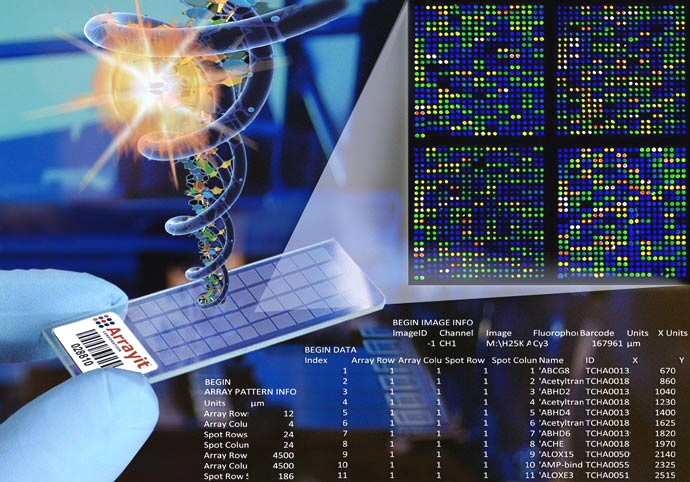Micro bio Array chip Structure and function (PhD in nano-microelectronics)
Researcher and author: Dr. ( Afshin Rashid)
Note: The microarrays are based on the concept of hybridization, cDNA binding, complementary DNA strands from sample RNA, to synthetic DNA strands. In the prototype microarray, the synthetic strings are attached to a small, solid support. This support - biochemistry - can be generated with thousands of probes or various recording agents.
Micro bio Array chips are ideal for a wide range of applications with large sample sets. The Micro bio Array chip is suitable for genomic studies that require the processing of large numbers of samples, fast rotation times, accurate data, or the effectiveness of clinical applications.
Nano biochip (Nano biochip) , a nanoelectronic device for biomarkers and microarrays, performs extensive genomic, perteomic and functional analysis on a large scale. Micro- bio-chips (Nano biochip) to mainly contains three types: DNA microarrays , protein microarrays, and micro fluid chip. By integrating microarray and microfluidic systems, a micro-nano-total analysis system, often referred to as the laboratory system ( nanobiochip ), is produced. Advances in nanotechnology have consistently reduced the size of nanochemistry , which in turn has reduced production costs and increased its high throughput capability. Due to the low cost, high power and nano-miniaturization benefits, this technology has great potential. The biggest advantage of DNA arrays is its high speed and power, and it is used in various genomic applications, including micro- particle analysis by microbiochips.
Chip micro- bio-chips, particularly fine array of functional, Is used to study basic biological properties such as the interaction of cells or other molecules. Nano biochips are capable of performing various types of chemical and cellular analysis, isolation and reaction. Micro Bio Chip is one of the fastest growing areas of microtechnics and is the development of nanotechnology and many technologies for developing applications in a wide range of disciplines including analysis and detection in cells. It is done by nanoparticles.
Researcher and author: Dr. ( Afshin Rashid)
PhD in Nano-Microelectronics




